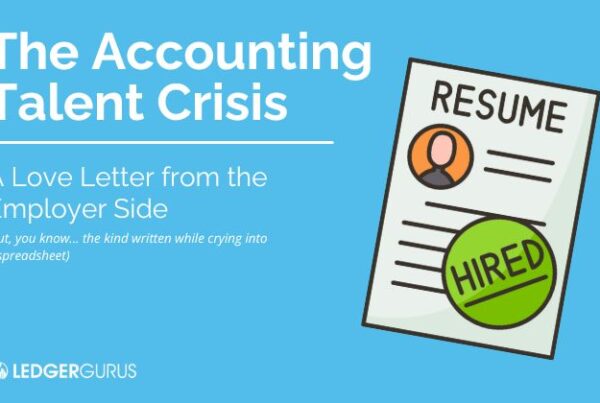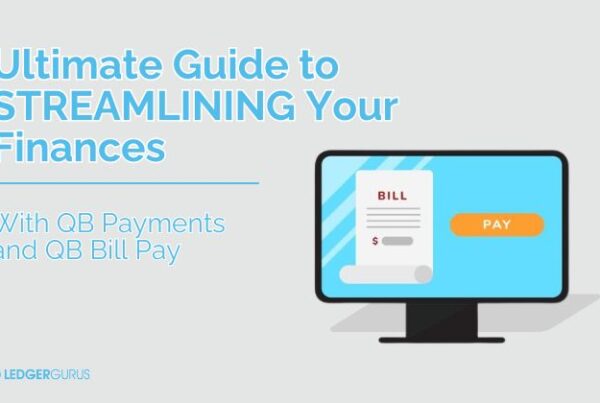
You’re an ecommerce business making your way in this crazy world. If the ecommerce balance sheet is like navigating the jungles of the Amazon, then navigating the income statement would be like climbing to the highest peaks of Mount Vesuvius (That’s an active volcano by the way).
If there is one thing we know it’s that you shouldn’t climb volcanoes alone. That’s why we wrote this article about the e-commerce income statement for your reading pleasure. Let’s talk about some of the accounts that will help you be volcano-climbing-ready in no time!
You can also view our YouTube video on “How to Read and Analyze Your eCommerce Income Statement” where our CEO goes more in-depth on what an income statement is, what questions it can answer, and how to use it in the everyday decision-making for your business. We highly encourage you to view that video as it covers very different information from this blog post.
The eCommerce Income Statement
The income statement accounts of a company, or the “Profit and Loss Statement” accounts, start over every period unlike balance sheet accounts. When the period ends you need to close them out and empty them into different balance sheet accounts.
The ecommerce income statement is very important as it shows the ability of a business to make a profit. It’s crucial to get it right so that it correctly communicates the state of your company’s financial health. And your financial health becomes super important when it comes to getting investors, loans, or buyers for your business.
The most common mistakes we see with e-commerce income statements are in the following areas:
- Sales tax income/expenses
- Revenue
- Cost of Goods Sold (COGS)
It’s time you show some extra love to these accounts.
Sales Tax Income and Expense
The most important thing to check when it comes to sales tax income and expense is if it is on the income statement at all. Why? Because you do NOT want it showing up on your income statement. I repeat. Nada of the sales taxes (whether income or expenses) should show up on your income statement. Collecting sales tax does not qualify as income and remitting it to the government doesn’t qualify as an expense.
If there are sales tax income or expense accounts showing up on your income statement, then you should do some further digging as this indicates an issue with how your accounting staff is handling sales tax. This is not a common issue that we see, but it is still one to be aware of as it will result in a misstatement on taxable income and impact your tax return numbers.
Read here to learn about how sales tax should be handled on your books.
Revenue
E-commerce companies vary the most from other companies when recording their revenue. So, it’s handy to have an accountant who truly understands e-commerce accounting.
Ask yourself the following questions to pin down if revenue is recorded correctly. Questions such as 1. Do income entries on your income statement show not only revenues but also other activity such as merchant fees, channel fees and shipping fees? And 2. Does sales data match your monthly channel data?
These questions are critical to making sure revenue is being recorded correctly. Other businesses are straightforward when recording revenues as most of their transactions pass through bank accounts and credit cards. All these companies need to do is simply record the bank account and credit card activity. Unfortunately, for e-commerce companies it’s not that simple. Most of their transactions pass through sales channels with only the settlement deposits hitting the bank account. If an accountant is recording these deposits as revenue, then they will be misstating revenue and likely getting the timing of it wrong as well.
How do you know if your deposits are being recorded as revenue? First, you need to dig into the back-end reports to collect the gross data from your channels. Record all the data of channel, tie it out to the payment processor that payment went through, and then tie out the deposit that hit the bank account. Once you do that, check to see how this information was recorded on the income statement. Check to see if the income entries are one-line items or if they also show activity such as chargebacks, merchant fees, or channels fees. If it doesn’t show any activity, then that should be a cause for concern and something you want to investigate further.
Cost of Goods Sold
Cost of goods sold (COGS) is usually the largest expense on an e-commerce companies balance sheet. Getting COGS right results in getting your gross profit right; so, it is SUPER important. If you look at your income statement, margins between COGS and Gross Profit should be predictable and stable. If they are not, this indicates that either 1. You are expensing inventory at the time of purchase, or 2. You are recording inventory periodically. Both of these are timing issues that relate to accrual vs. cash accounting. COGS should have a reasonable and predictable relationship with sales during the same time period. If it doesn’t, then that might be something you want to check up on.
Income Statement Success
Now you are as ready as you are ever going to be to climb that active volcano. Just remember to say see-ya-later to those sales tax income or expense accounts. Don’t let those settlement deposits trick you into thinking they are revenue. Look for the activity people. And remember that the margins between COGS and Gross Profit should be predictable and stable. Record your COGS when you sell your inventory. And last but not least, if you want a guide for your e-commerce needs, then we are here to help!




